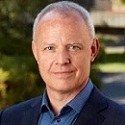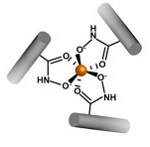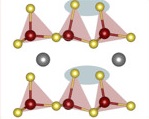
From the Director

SSRL, ALS, APS and NSLS are coordinating experimental run schedules for the coming months to try to avoid dry periods when multiple light sources are down at the same time. As a result of this coordination activity we have made the decision to move the end of our current experimental run up to July 13 rather than August 11 as originally planned. Barring unforeseen circumstances we will resume user operations in early September.
For information about our Phase 1 operating plans in the June to mid-July time period please see our May 28, 2020 announcement.
We are also pleased to direct you to the information of SSRL’s role in COVID-19 response on YouTube – we continue to enable science at our SSRL beam lines for this purpose.
Science Highlights

Design of Novel Protein Cages – Contact: Akif Tezcan, University of California, San Diego
Some proteins can form complex cage structures that can trap, hold, catalyze, and release small molecular and atomic cargo based on environmental signals. These protein cages are made of a collection of identical monomer proteins self-assembled into a symmetric conformation. Protein cages are found in nature, including in virus capsids, and have attracted much interest for engineering them to perform specific functions. In the past, designed protein cages have formed highly porous, “wiffle-ball”-like assemblies, but a team of scientists have used knowledge of inorganic chemistry, such as metal-coordination preferences, to design a tightly-packed protein cage that more closely mimics natural protein cages. Read more...
Cathode Enables Quasi-Two-Stage Intercalation for Multivalent Zinc Batteries – Contact: Johanna Nelson Weker, SSRL
Because they are highly efficient, low maintenance, and light, lithium-ion batteries have grown in popularity. Their use has improved the functionality of many electronics, such as allowing our cell phones to be more portable and our electric cars to travel longer distances. However, some precious metal components of these batteries are in short supply, prompting researchers to develop “beyond lithium-ion” alternatives that use elements more abundant on Earth, yet have the qualities that make lithium-ion batteries so useful. Attention has turned to using common divalent metals, such as calcium, magnesium, and zinc, at the anode for a new type of battery. Read more...

Reversible Cation and Anion Redox in Lithium-rich Sulfide Battery Cathodes – Contact: Johanna Nelson Weker, SSRL
While steady improvement of lithium-ion batteries has allowed electronic technologies to perform better, researchers are nearing a theoretical limit to lithium-ion battery capacity. One way to overcome this limit is to change the chemistry of materials to allow more electrons to exchange between anode and cathode per unit of material. Currently, LiCoO2 lithium-ion batteries transfer one electron per unit of cathode, but other lithium-based materials may allow for higher capacity. A team of researchers has investigated the Li-rich layered sulfide Li2FeS2 and a novel analog LiNaFeS2 as potential higher capacity alternatives since they can store 1.5 or more electrons per unit. Read more...
More SSRL Science
Computer Vision Helps Scientists Study Lithium Ion Batteries
Excerpt from May 8, 2020 SLAC News Article by Nathan Collins
Lithium-ion batteries lose their juice over time, causing scientists and engineers to work hard to understand that process in detail. Now, a team of scientists has combined sophisticated machine learning algorithms with x-ray tomography data to produce a detailed picture of how one battery component, the cathode, degrades with use.
The new study, published May 8 in Nature Communications, focused on how to better visualize what is going on in cathodes made of nickel-manganese-cobalt, or NMC. In these cathodes, NMC particles are held together by a conductive carbon matrix, and researchers have speculated that one cause of performance decline could be particles breaking away from that matrix. The team’s goal was to combine cutting-edge capabilities at SSRL and the European Synchrotron Radiation Facility (ESRF) to develop a comprehensive picture of how NMC particles break apart and break away from the matrix and how that might contribute to performance losses. Read more...
Call for Award Nominations
Recognize outstanding achievements of your colleagues, postdocs, students (or yourself) by submitting nominations for the following awards by the posted deadlines. Send nomination packages for these awards to Cathy Knotts.
William E. and Diane M. Spicer Young Investigator Award – Submit Nominations by JULY 1
Melvin P. Klein Scientific Development Award – Submit Nominations by AUGUST 1
Farrel W. Lytle Award – Submit Nominations by AUGUST 5
These awards will be presented at the SSRL/LCLS Annual Users’ Meeting and Workshops. Recipients of the Klein and Spicer awards will be asked to present their research during the plenary session.
Events
- SLAC Public Lecture | Discovering the Colors of Fossil Creatures, June 2, 2020 7:30-8:30 pm (online) website
See also: Discovering the Colors of Fossil Creatures, Youtube presentation by Nick Edwards - Cryo-EM Image Processing Workshop, June 10–12, 2020 (online) S2C2 Workshops
- Ultrafast X-ray Summer School 2020 (UXSS 2020), June 15–18, 2020 (online) website
- SSRL X-ray Scattering School, Save the dates: August 3–7, 2020 (postponed)
- SSRL EXAFS Summer School, Save the dates: August 24–27, 2020 (TBD)
- 78th Annual Pittsburgh Diffraction Society Conference, Menlo Park, CA, Sep 27–29 (cancelled)
- SSRL/LCLS Users' Meeting and Workshops, Sep 28–Oct 9, 2020 (online)
- Mark your calendar and plan to attend the SSRL/LCLS Annual Users’ Meeting and Workshops, a virtual meeting held the mornings of September 28 through October 9, 2020. The meeting will include facility updates, a DOE BES update, invited talks, and several focused workshops. website
User Research Administration
Proposal Deadlines
- June 1, 2020 – S2C2 Cryo-EM Service/Training Proposals
- July 1, 2020 – Macromolecular Crystallography
- August 1, 2020 – Xray/VUV
Submit beam time requests and proposals through the User Portal. Questions can be directed to the SSRL User Office or the CryoEM User Office
The Stanford Synchrotron Radiation Lightsource (SSRL) is a third-generation light source producing extremely bright x-rays for basic and applied research. SSRL attracts and supports scientists from around the world who use its state-of-the-art capabilities to make discoveries that benefit society. SSRL, a U.S. DOE Office of Science national user facility, is a Directorate of SLAC National Accelerator Laboratory, operated by Stanford University for the U.S. Department of Energy Office of Science. The SSRL Structural Molecular Biology Program is supported by the DOE Office of Biological and Environmental Research, and by the National Institutes of Health, National Institute of General Medical Sciences. For more information about SSRL science, operations and schedules, visit http://www-ssrl.slac.stanford.edu.
To unsubscribe from SSRL Headlines, just send an e-mail to listserv@slac.stanford.edu with "signoff ssrl-headlines" in the body.
To subscribe, send an e-mail to with "subscribe ssrl-headlines" in the body.
Questions? Comments? Contact Lisa Dunn




